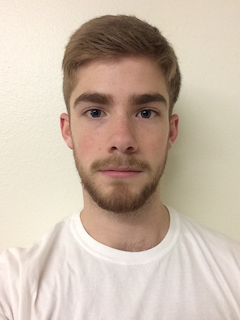Below is a summary of the abstract you submitted. Presenting author(s) is shown in bold.
If any changes need to be made, you can modify the abstract or change the authors.
You can also download a .docx version of this abstract.
If there are any problems, please email Dan at dar78@pitt.edu and he'll take care of them!
This abstract was last modified on April 21, 2015 at 11:02 a.m..

Paenibacillus larvae is a firmicute bacterium that infects honeybee larvae and causes American Foulbrood Disease in hives. The 2013-2014 North Carolina State University Phage Hunters class isolated several P. larvae bacteriophages in North Carolina, and among these was a siphoviridae phage named Tripp. During the spring 2015 semester, NC State Phage Hunters students annotated the Tripp genome. While analyzing the genome, we found two consecutive genes that were called to encode partial transposases. If the two genes were joined, they would encode a more typical full-length transposase, which is an enzyme that facilitates movement of genes within and across genomes. We have found evidence to suggest there is an uncommon -2 programmed translational frameshift linking these partial genes. A programmed translational frameshift is an infrequent event that occurs when the ribosome stalls during translation, causing a shift along the RNA and a change in reading frame. Frameshifts of +1 and -1 have been found to occur in forming full-length transposases, but we are unaware of any -2 programmed frameshift in a transposase gene. Features of a frameshift can include a slippery sequence of repeated bases and a downstream RNA pseudoknot; a pseudoknot is a complex RNA structure that forms when mRNA folds on itself and creates a knot-like roadblock for ribosomes during translation. We identified a slippery sequence and probable pseudoknot at the junction of the partial transposase genes in the Tripp genome. When the translating ribosome reaches the pseudoknot structure, it stalls and slips back two nucleotides along the slippery sequence while the knot unfolds, causing the frameshift to occur. The change of reading frame caused by a -2 frameshift would result in a readthrough of the original stop codon, linking the segments of the transposase. Only 1-5% of translating ribosomes undergo a frameshift at most programmed frameshift sites, which for Tripp would result in low level transposase expression. This would allow for some genetic variation without greatly altering the genome or causing detrimental effects. In the future, we hope to experimentally confirm the presence of the RNA pseudoknot and identify the product of the frameshift, which will reinforce our discovery of an uncommon -2 frameshift in bacteriophage Tripp. Additionally, characterizing the features of the Tripp -2 frameshift may improve our understanding of the frameshift mechanism and allow us to determine why the -2 frameshift occurs in Tripp, rather than a ±1 frameshift.

